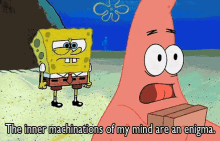I've used Fractal since 2009. I switched to the QC for a year and now I'm back to using Fractal. They both have their upsides and downsides. Some things I prefer on the QC and some things (more things, obviously) I prefer on the Fractal.
What some see as complexity on Fractal, I see as freedom and possibilities. What some call ease of use on QC, I see as restrictions. At first I thought it's fucking sweet to be able to put 12 captures, six choruses and 3 reverbs in each patch, but after a while the novelty wears off and you're left with fx that are not up to standards (apart from some of the modulations, which are good!) and trying to design patches that minimise latency. One parallel path? Why?
One thing that annoyed me to no end is that it seems like Neural don't even know how their own hardware works. There is nothing in the manual about setting input levels, no mention of fx loop levels (they're not unity, they're something?? Users had to figure out how to set levels to have near unity gain. And then it felt like the levels are different depending on if you use the fx loop block vs separate send/return?)
I'd love nothing more than to support a Finnish company, but I just can't anymore. It was pretty cool to be able to buy a domestic high end amp modeler of all things.
Sure, this all makes sense to me.
In terms of the freedom vs. complexity thing, I obviously need to invest more time. We'll see whether the things I don't need are easily ignored, or whether I keep tripping over them on the way to what I'm actually trying to work with.
It's ironic. I've often complained about gear because I needed it to be
more flexible, and now I find myself wondering if the FM3 needs to be as flexible as it is. Some of it comes down to timing: say 10 years ago I'd be trying to use/ misuse some old Digitech footcontroller I bought for a dollar, and yelling at my Kemper because I couldn't get it to respond to random PC messages exactly the way I wanted. Whereas today, I have cheap controllers that can be programmed to send exactly what's needed, and that's the way my (human) brain organizes things; so I want to just open a manual and find a simple chart that says "Send MIDI X to perform function Y, end of story, now go get your guitar." (I.e. page 95 of the QC manual.)
I know that in absolute terms the FAS stuff is more capable under more circumstances, and that is an objectively good thing. It just sometimes feels like it all needs a shave and a haircut to make presentation/ navigation a little more efficient. A vague sense that features x, y, and z are like a Venn diagram of functionality that overlaps 85% in the middle.
As for levels, etc. I'll take your word on that. I know it's been a common complaint. I play exclusively in my own home now, where I have control over all of the external variables (e.g. outboard gear), so it's never troubled me to just find the corresponding level knobs (right there on one convenient page with an actual picture of all the I/O) and turn them until everything sounds good. The crux of the matter, for me, being that this always happens quickly and painlessly on QC, whereas on FAS I'm looking at a lot of different screens, and still wondering if I should be concerned about some other screen I'm not aware of.

QC's four lanes, two parallel paths - I assume this is representative of the underlying architecture, since it's exactly the same functionality as presented by Helix Floor, etc. But I could be wrong about this.
NDSP does have a knack for seeming clueless. I mean, they built this thing and they managed to make the OS work (however long it took them), so there's clearly intelligent talent onboard. But whenever you present a question to support or whomever, it turns into a clown car. I think it's a communications and staffing issue more than anything, but from a customer perspective... same difference.


